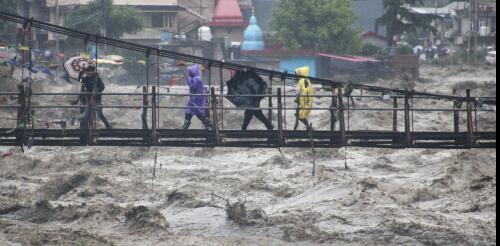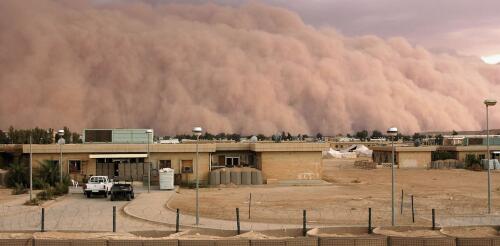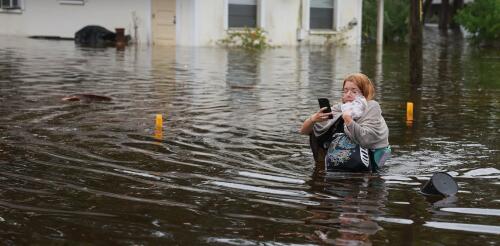environment
Torrential downpours sent muddy water racing through streets in Libya, Greece and Spain and flooded parts of Hong Kong and New York City in September 2023. Thousands of people died in the city of Derna, Libya. Zagora, Greece, saw a record 30 inches of rain, the equivalent of a year and a half of rain falling in 24 hours. A few weeks earlier, monsoon rains triggered deadly landslides and flooding in the Himalayas that killed dozens of people in India. After severe flooding on almost every continent this year, including mudslides and flooding in California in early 2023 and devastating floods in Vermont and New York in July, it can seem like extreme rainfall is becoming more common. So, what role does global warming play in this? And importantly, what can we do to adapt to this new reality? A powerful storm system in 2023 flooded communities across Vermont and left large parts of the capital, Montpelier, underwater. John Tul...
Electric vehicle sales are growing faster than expected around the world, and sales of gas- and diesel-powered vehicles have been falling. Yet, the U.S. government still forecasts an increasing demand for oil, and the oil industry is doubling down on production plans. Why is that, and what happens if the U.S. projections for growing oil demand are wrong? I study sustainability and global energy system transformations. Let’s take a closer look at the changes underway. EVs’ giant leap forward On Sept. 12, 2023, Fatih Birol, director of the International Energy Agency, an intergovernmental organization that advises the world’s major economies, drew global attention when he wrote in the Financial Times that the IEA is now projecting a global peak in demand for oil, gas and coal by 2030. The new date was a significant leap forward in time compared with previous estimates that the peak would not be until the 2030s for oil and even later for gas. It also stood out...
Humans have contended with dust storms for thousands of years, ever since early civilizations appeared in the Middle East and North Africa. But modern desert dust storms are different from their preindustrial counterparts. Around the world, deserts now increasingly border built structures, including urban dwellings, manufacturing, transportation hubs, sewage treatment and landfills. As a result, desert dust lifts a growing load of airborne pollutants and transports these substances over long distances. This is happening throughout the Global Dust Belt, an arid to semiarid region that stretches from western China through Central Asia, the Middle East and North Africa. Similar storms occur in the U.S. Southwest and central Australia. Global pattern of dust frequency estimated from weather records, 1974-2012. Shao et al., 2013, CC BY-ND To our thinking, modern desert dust storms have been overlooked...
In a world facing environmental challenges unprecedented in human history, it’s no surprise that eco-anxiety – a pervasive worry about the current and future state of our planet – has become an increasingly prevalent mental health issue. As people witness the devastating impacts of climate change, deforestation and loss of biodiversity, it’s only natural to feel overwhelmed and disheartened. I happen to live in Phoenix, Arizona, a “heat apocalypse” city with dwindling water supplies, so I have some skin in the game. But amid doom-and-gloom predictions, there is hope. As a therapist and clinical social work professor, I have seen firsthand how paralyzing eco-anxiety can be, and I’m dedicated to finding solutions. Here are a few evidence-based tips to tackle your climate woes. What is eco-anxiety? Eco-anxiety is a broad term that encompasses dread about environmental issues like pollution and disposal of toxic waste, as well as climate...
As questions loom over the Federal Emergency Management Agency’s ability to fund disaster recovery efforts, people whose homes were damaged or destroyed by recent wildfires and storms are trying to make their way through the difficult process of securing financial aid. Residents in communities hit by Hurricane Idalia, the Maui fires or other recent disasters have a long, tough journey ahead. Early estimates suggest Idalia caused US$12 billion to $20 billion in losses, primarily in property damage, acccording to Moody’s Analytics. And rebuilding Lahaina, Hawaii, has been forecast at over $5.5 billion. How well the initial disaster response meets residents’ needs has far-reaching consequences for community resilience, especially for vulnerable residents, as we saw after Hurricanes Katrina and Maria. I am a law professor who focuses on disaster recovery and preparedness and has created several legal clinics to assist survivors. Here’s what anyone facing lo...




